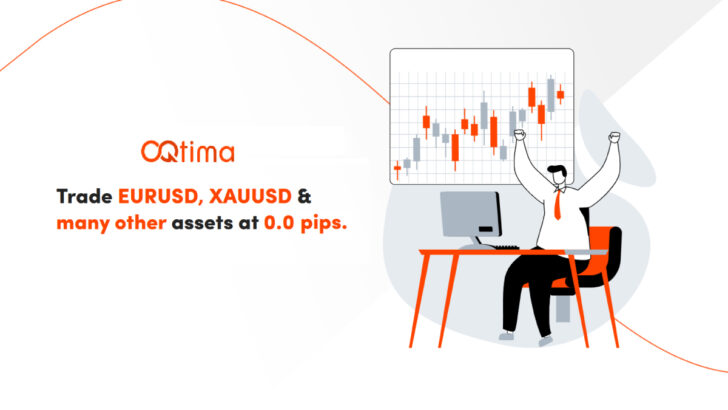Everything you need to know about "Leveraged Forex Trading" (Part 3)
Learn how Forex leverage impacts trading, its risks, best strategies for beginners and professionals, and how to manage leverage effectively.


Leverage in Forex trading allows traders to increase their position size while reducing margin requirements, but it also comes with high risks of rapid losses. Using low leverage can help traders manage risk better, allowing them to lock positions and control losses efficiently. Many professional traders use different leverage levels depending on their strategies, with scalpers favoring high leverage and long-term traders preferring lower leverage. To minimize risks, traders should limit each transaction to a small percentage of their deposit, use stop losses, and avoid emotional trading. Novice traders are advised to start with low leverage and practice on a demo account before moving to real funds.
Forex Leverage Explained: Risks, Strategies & Best Practices for Traders
Master Forex leverage with expert strategies—minimize risks and maximize profits with the right approach to leveraged trading.
| Key Aspect | Details |
|---|---|
| What is Forex Leverage? | A trading tool that allows traders to increase their position size with borrowed funds. |
| Main Risk | High leverage can lead to rapid losses if risk is not managed properly. |
| Best Leverage for Beginners | 1:1 to 1:10, starting with a demo account. |
| Professional Traders’ Preference | Scalpers use high leverage; long-term traders use low leverage. |
| Risk Management Tips | Use stop loss, limit risk to 2-5% per trade, and avoid emotional trading. |
| Tools for Safe Trading | Forex margin calculator, demo accounts, trading journals. |
| Regulated Leverage Limits | European regulators recommend 1:20 to 1:50; crypto exchanges often set 1:2 to 1:5. |
| Best Strategy for Risk Control | Use calculated leverage based on risk tolerance and market conditions. |
Risk of high leverage
There is only one major risk in using leveraged trading. If leverage is used to increase total open interest, potential losses increase proportionally to it. On the one hand, high leverage is an opportunity to make big money in Forex, on the other hand, you can lose your deposit very quickly.
In order to reduce the risk of high leverage trading, please do not use all deposits at once. Each transaction uses no more than 2% of your deposit.
Go to LiteFinance Official Website
Example using low leverage
Example 1. The EURUSD rate is 1.2. Your deposit is $1200. If you open a position with a minimum volume of 0.01 lots, the margin will be $1200 and the free funds available for operation are zero.
Suppose you have doubts about the direction of the price and want to lock the position and not cover the position with real funds.
You use 1:2 leverage. This cuts the amount of collateral in half. This way you will have more funds to work with and you can open a second position of equal value to lock in the first trade.
In conclusion, in some cases, low leverage can be beneficial when you do not have sufficient funds of your own.
Example 2. Using the same deposit, you open a position with a volume of 0.01 lots. But your prediction was wrong and the price fell by 10 points. A 4-digit quote of 0.01 lots of EUR/USD has a pip value of 10 cents and your loss is $1. Next, you open a position of 0.02 lots with the same margin with 1:2 leverage. A 10 pip increase in price gives you a $2 profit to cover the previous loss.
In conclusion, in some cases, doubling your open interest according to the Martingale strategy, Forex leverage can help you cover your losses.
What is the best leverage for forex trading?
Practice shows that more than 40% of traders prefer leverage as high as 1:10, and about 17% of traders use leverage of more than 1:100. European regulators of several trading instruments recommend that forex brokers limit maximum leverage to 1:20 – 1:50.
The leverage most commonly set by cryptocurrency exchanges is 1:2 – 1:5. Emotionally driven traders opt for leverage as high as 1:1000, hoping to maximize their positions without having enough of their own funds. I usually don’t seriously consider brokers that offer leverage over 1000.
I would recommend novice traders to start trading with a minimum leverage of 1:1 using a demo account.
Before trading with borrowed funds, traders should first:
- Learn to build and adjust risk management strategies for each trading system. They should cautiously increase risk when the market trend is flat and reduce risk when the trend fluctuates wildly.
- Learn to use different trading systems, use indicators, operate on the trading platform, and more.
- Learn to control your emotions and eliminate greed, excitement, and the desire to win back your losses.
Only when novice traders are confident in their skills and abilities and can do the above, they can start trading with a live account. In a real account, the leverage ratio for novice traders is 1:10. This forex leverage will allow them to open positions as small as 0.01 lots with relatively small deposits.
What leverage do professional traders use? Only experienced traders themselves can answer this question. Traders who employ forex spread and scalping strategies typically use high leverage. Their profit after the stop loss is only a few pips, so the high point value is important to them, and the high point value is determined by the large open interest.
Traders who prefer long-term trading strategies try not to use high leverage. So, you should consider for yourself whether to use high leverage or low leverage.
Go to LiteFinance Official Website
How to Manage Forex Leverage Risk: 5 Tips for Novice Traders
A few tips for novice traders:
- Follow the main risk management rule “The risk of each transaction shall not exceed 5% of the deposit”. It is the ratio of open interest to stop loss. For example, for a $1000 deposit, the risk should not exceed $50 per trade. This is equivalent to 5 pips (1:100 leverage) at 1 lot volume or 500 pips (1:2 leverage) at 0.01 lot volume.
- According to the volatility calculator, the daily price change of the EURUSD currency pair is 80 pips. This means that with a volume of 1 lot, the “5% risk” rule will be violated.
- Use a Forex calculator to calculate lot size and margin. They will help you understand the amount of free money and what leverage is safe for your situation.
- Use stop loss. If you make a mistake on leverage and the pip value gets higher, a stop loss will close your position in time. You will not lose your deposit and learn this lesson.
- Control your emotions. Do not use leveraged Martingale strategy to increase your position. Do not increase your position if it goes against the rules of risk management, even if you are 100% sure you will be profitable.
- Train your trading skills on a demo account. Choose the leverage that best suits your trading style and trade on a demo account.
What is the best leverage to use in Forex? This leverage will apply your initial deposit and bring you high profits at the optimal risk level.
All of the above may seem too complicated at first glance. Leverage, margin, various calculation formulas, risk management.
All of this seems difficult until you practice. These are the basic concepts that you must have in your trading. If you want to learn how to make money in Forex and other markets, let me give you some more advice:
- Open a demo account. This will take a few minutes and no verification is required. Research the features of LiteFinance customer profiles.
- Try using different leverages for your first trade. See the differences and compare different trading instruments. You should record all your orders in your trader’s journal.
- Ask questions and share your thoughts! You can write them in the comments section below this article. You can also study with a trading mentor/mentor, where you can count experienced and successful colleagues as mentors.
Go to LiteFinance Official Website
Conclusion
Financial leverage is a tool that traders can use to increase their position size or reduce their margin requirements (collateral), thereby saving money to open other positions. Leverage is a high-risk trading tool if the total open interest exceeds the deposit percentage recommended by the risk management system.
To calculate optimal leverage, use a Forex margin calculator or create an Excel table that will show how open interest changes as leverage increases. This way you will see the maximum pip value when the stop loss level is reached.
If you have any questions about how to use leverage for Forex trading, please write your questions or conclusions in the comments!
FAQs
- What is Forex leverage?
- Leverage allows traders to control a larger position size using borrowed funds from a broker.
- What is the main risk of using high leverage?
- High leverage increases potential losses as much as potential profits, leading to quick depletion of capital.
- What is the best leverage for beginners?
- Beginners should start with low leverage, around 1:1 to 1:10, and practice on a demo account.
- How does low leverage help in trading?
- Low leverage reduces margin requirements and risk exposure, giving traders more control over their positions.
- What leverage do professional traders use?
- Scalpers and short-term traders prefer high leverage, while long-term traders opt for lower leverage.
- What are some risk management strategies for leveraged trading?
- Use stop loss, limit each trade to 2-5% of capital, and avoid emotional trading decisions.
- Is it safe to use 1:1000 leverage?
- 1:1000 leverage is extremely risky and is not recommended for most traders, especially beginners.
- Do regulators impose leverage limits?
- Yes, European regulators limit leverage to 1:20 – 1:50 for retail traders to protect them from excessive risks.
- What tools can help manage leveraged trading?
- Forex margin calculators, demo accounts, and trading journals help traders calculate and control risks.
- How can I choose the right leverage for my trading style?
- Test different leverage levels on a demo account to find the balance between risk and profitability that suits you best.
Latest Features
- Close






